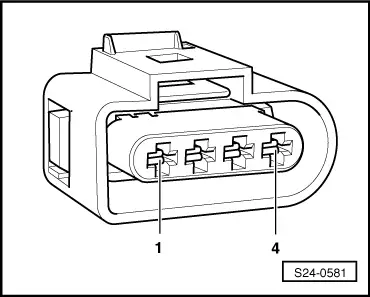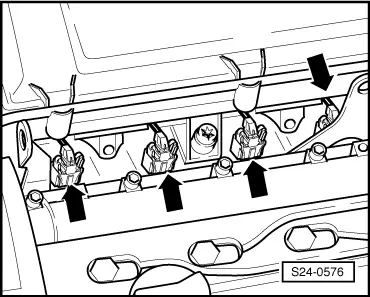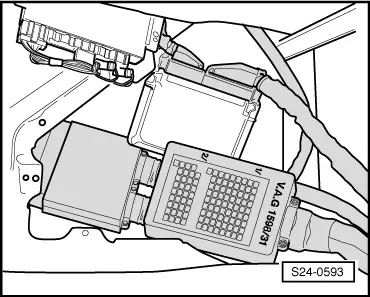| Check ignition coils with power output stage (engines with engine identification characters BBY, BKY, BBZ, BUD) |
| Special tools and workshop equipment required |
| t
| Test box -V.A.G 1598/31- or -V.A.G 1598/22- |
| t
| Handheld multimeter, e.g. -V.A.G 1526 B- |
| t
| Measuring tool set, e.g. -V.A.G 1594 C- |
| t
| Diode test lamp, e.g. -V.A.G 1527- |

Note | Ignition coil and power output stage form a building unit. |
| Cylinder, which does not operate or misfire, determine as follows: |
| If a combustion misfiring was detected: |
| –
| Proceed with test on cylinder determined as defective. |
| If no combustion misfiring was detected: |
| –
| Successively remove contacts of the injectors while engine is running and monitor engine run, |
| –
| Compare spark plugs of all cylinders and pay attention to contaminated (covered with soot) electrodes. |
| If a defective cylinder was determined: |
| –
| Replace the spark plug of the defective cylinder with the one of another cylinder. |
| If the fault on this spark plug still exists: |
| If the given cylinder is still defective: |
| –
| Replace the ignition coil of the defective cylinder with the one of another cylinder. |
| If the fault on this ignition coil still exists: |
| If the given cylinder is still defective: |
| –
| Unplug the 4 pin plug connections from all ignition coils. |
|
|
|
 Note
Note





 Note
Note




